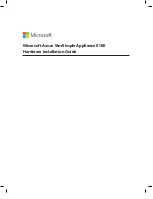
317
AttrID: 0x0 Neighbor: 2001::1
Flags: 0x10060 OrigNextHop: 2001::1
Label: NULL RealNextHop: FE80::20C:29FF:FE40:715
BkLabel: NULL BkNextHop: N/A
Tunnel ID: Invalid Interface: GigabitEthernet2/0
BkTunnel ID: Invalid BkInterface: N/A
The output shows that Router C communicates with network 1200::0/64 through the path Router
C<—>Router D<—>Router A.
IPv6 BGP FRR configuration example
Network requirements
As shown in
Figure 76
, configure BGP FRR so that when Link B fails, BGP uses Link A to forward traffic.
Figure 76
Network diagram
Configuration procedure
1.
Configure IPv6 addresses for interfaces. (Details not shown.)
2.
Configure OSPFv3 in AS 200 to ensure connectivity among Router B, Router C, and Router D.
(Details not shown.)
3.
Configure BGP connections:
# Configure Router A to establish EBGP sessions with Router B and Router C, and advertise
network 1::/64.
<RouterA> system-view
[RouterA] bgp 100
[RouterA] router-id 1.1.1.1
[RouterA-bgp] peer 3001::2 as-number 200
[RouterA-bgp] peer 2001::2 as-number 200
[RouterA-bgp] address-family ipv6 unicast
[RouterA-bgp-ipv6] peer 3001::2 enable
[RouterA-bgp-ipv6] peer 2001::2 enable
[RouterA-bgp-ipv6] network 1:: 64
Router B
Router C
Router D
AS 200
AS 100
Router A
GE2/0
2001::1/64
GE1/0
3001::1/64
GE1/0
3001::2/64
GE2/0
3002::1/64
GE2/0
2002::2/64
GE1/0
3002::2/64
GE1/0
2001::2/64
GE2/0
2002::1/64
Link A
Link B
Loop0
2.2.2.2/32
Loop0
3.3.3.3/32
















































